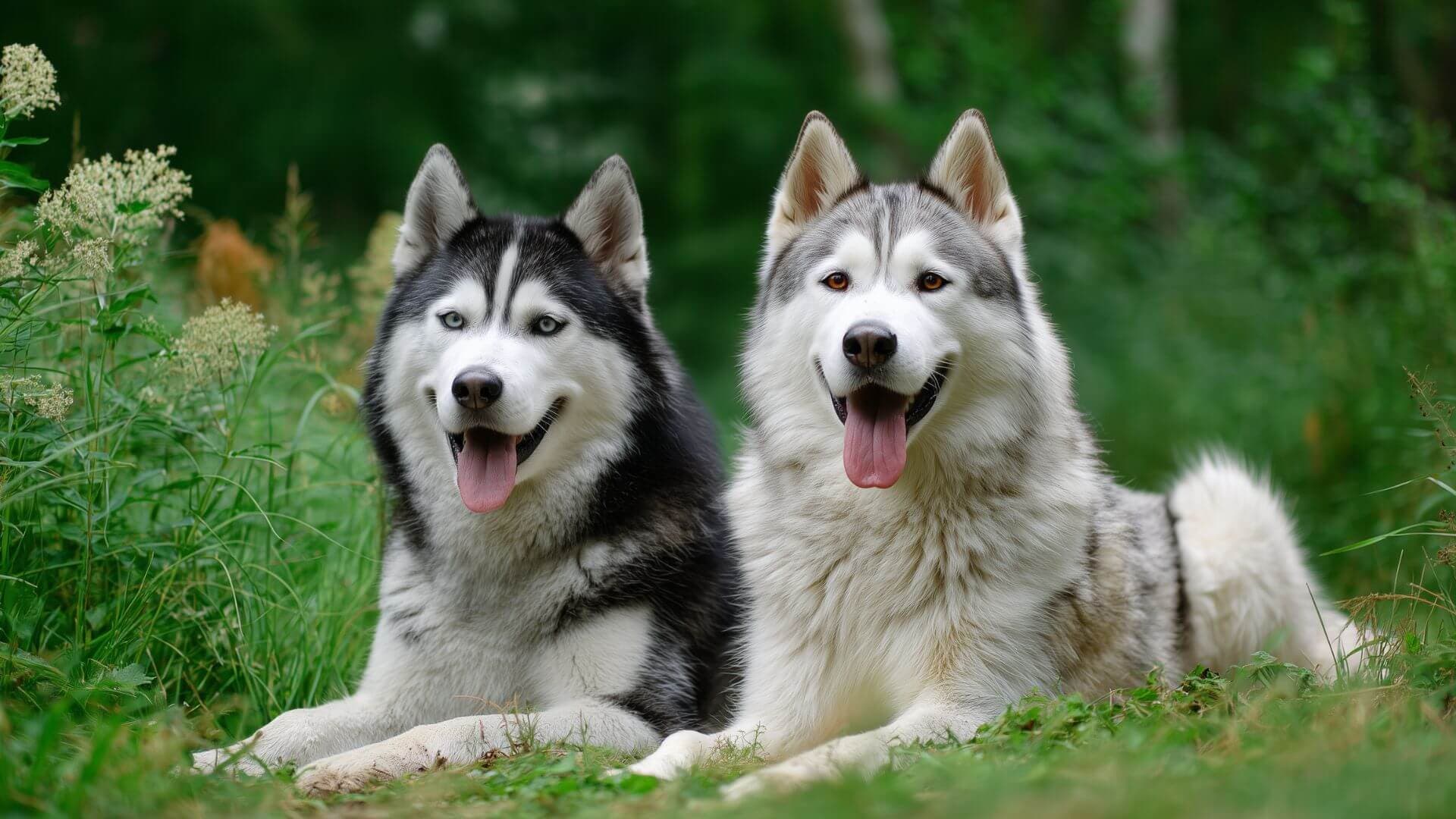
Best Age To Breed A Dog (Male & Female)
Find out the best age to breed dogs and the key factors involved. Ensure your dog’s health and safety with our expert breeding insights.

Connect with responsible Siberian Husky breeders and find the ideal breeding partner for your adventurous companion
Essential characteristics to consider when breeding these magnificent arctic athletes
12-14 years
Generally healthy breed
Outgoing, Mischievous
Escape artists
Discover what makes Siberian Huskies exceptional breeding companions and why they're treasured worldwide
Husky mothers are legendary for their nurturing abilities. Their pack mentality creates harmonious family units where puppies learn essential social skills naturally.
Natural whelping success rate
Pack harmony creates confident puppies
Breeding Huskies means preserving the legacy of the world's greatest sled dogs. Their incredible endurance and efficiency have saved countless lives throughout history.
Every Husky puppy is a stunning masterpiece. Their piercing blue eyes, unique markings, and plush double coat create an unforgettable appearance that captivates hearts worldwide.
Huskies are famously friendly, making them terrible guard dogs but wonderful family companions. Their pack mentality creates dogs that thrive in multi-pet households.
Breeding preserves the spirit of the Arctic
These exceptional traits make Siberian Huskies one of the most rewarding breeds to work with
Follow these essential guidelines for responsible and successful Siberian Husky breeding
Wait for complete health testing and mental maturity. Huskies can work and breed into older age if healthy. Their athletic nature maintains breeding fitness longer than many breeds.
Focus on hip clearances for working ability
Once per year maximum
4-5 litters lifetime
Skip at least one heat between litters
Generally easy whelpers with strong maternal instincts. Natural mothers who rarely need assistance.
Athletic excellence requires daily adventure
Perfect Activities:
Under-exercised Huskies become destructive escape artists!
6-foot minimum fencing
They can jump incredibly high
Buried fence barriers
Prevents digging escapes
No-climb features
They're clever climbers
Famous for escaping any enclosure. Secure environment is essential for safety.
Pack Animals
Better with other dogs than alone
Heavy Shedding
"Blowing coat" twice yearly
High Prey Drive
Will chase small animals
Vocal Nature
Famous "talking" and howling
Connect with verified Siberian Husky owners for safe and ethical breeding

Siberian Husky

Siberian Husky

Siberian Husky mix

Siberian Husky

Siberian Husky mix

Siberian Husky

Siberian Husky

Siberian Husky
From profile to puppies - your siberian husky breeding journey in 4 simple steps
Set up a detailed profile with photos, health records, and pedigree information
Browse verified breeding partners based on breed, location, and compatibility
Message owners directly to discuss breeding plans and health certifications
Meet safely, complete breeding agreements, and welcome healthy puppies
Set up a detailed profile with photos, health records, and pedigree information
Browse verified breeding partners based on breed, location, and compatibility
Message owners directly to discuss breeding plans and health certifications
Meet safely, complete breeding agreements, and welcome healthy puppies
Join thousands of responsible siberian husky owners who trust us for quality breeding connections
Every breeder is verified, ensuring you connect with genuine, responsible pet owners.
Find breeding partners near you to make meetings convenient and stress-free.
Customize your search with detailed filters for breed, age, health status, and more.
Chat directly with pet owners to discuss all details before making any commitments.
Join thousands of responsible siberian husky owners who've found quality breeding partners on Petmeetly.
Get Started NowReal stories from dog owners who found perfect breeding matches on Petmeetly
It was a perfect experience. Thank you!
Abhinav
Delhi, IN
Everything has been great! Thank you, Kevin. I’ll be meeting up with Olive from Petmeetly in October
Aarthy
Victoria, AU
The mating of Sofee should happen this August, but I want to keep options if the deal breaks. Your platform has been wonderful. Thanks
Curtis Kolarich
Arizona, US
Modern health testing empowers you to create vibrant, healthy Siberian Husky bloodlines that thrive for generations
OFA or PennHIP testing celebrates athletic structure! Good/excellent ratings ensure Huskies who run with legendary endurance.
Crystal Clear Vision
Annual CERF examinations maintain brilliant sight
Striking Blue Eyes
Comprehensive care ensures healthy, expressive eyes
Your testing ensures lifelong vision health
Annual thyroid panels ensure vibrant energy! Monitoring maintains incredible endurance.
Unique efficiency powers their legendary stamina and lustrous coats.
Understanding Arctic breed nutrition creates glowing health! Simple zinc supplementation when needed ensures beautiful coats.
Smart nutrition creates stunning coats
EIC genetic testing ensures endurance champions! Your testing creates confidence that Huskies can enjoy their legendary running abilities safely.
World's greatest endurance athletes
Huskies enjoy excellent health with lower cancer rates than many breeds! Your good breeding practices ensure 12-14 years of adventure together.
Your care ensures years of adventures
By maintaining their athletic heritage, you're preserving the legendary endurance that makes Huskies extraordinary. Each active breeding pair passes on the stamina that has saved countless lives throughout history.
Your testing creates athletic champions
Expert advice and tips for Siberian Husky breeding

Find out the best age to breed dogs and the key factors involved. Ensure your dog’s health and safety with our expert breeding insights.

Understand the importance of socializing your pet. This guide will help you create positive experiences for your pet, ensuring they thrive in various environments.

Planning to breed your dog? Use our step-by-step dog breeding checklists to manage health tests, mating, whelping and puppy care—always with vet-backed guidance.
Discover breeding guides for different dog breeds and find the perfect match for your breeding program
Join our community of responsible Siberian Husky breeders committed to preserving this noble breed